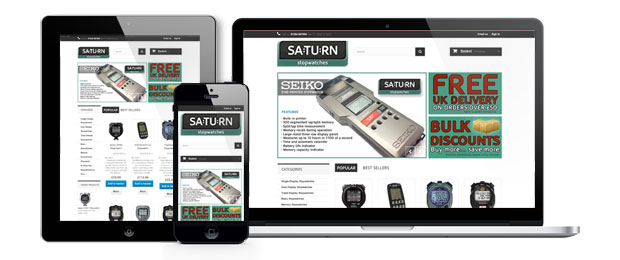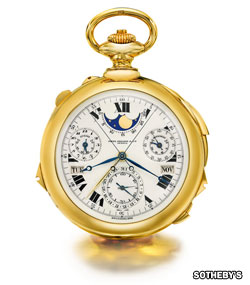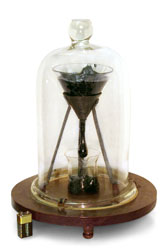
The opening ceremony for the postponed Tokyo 2020 Summer Olympic Games is due to take place later today.
Perfect timing then to take a look at how timekeeping at the Olympics has changed over the years…
Continue reading

The opening ceremony for the postponed Tokyo 2020 Summer Olympic Games is due to take place later today.
Perfect timing then to take a look at how timekeeping at the Olympics has changed over the years…
Continue readingTime, and its passage, is a popular subject for the arts. Painters, musicians, filmmakers, sculptors and contemporary artists have interpreted time in countless ways and used it for inspiration to produce a variety of pieces of art.
In today’s blog post, we’ll look at some interesting, and unique pieces of time inspired art…
Continue reading
On the 27th March 2020 (whilst the world was distracted with other things), a new comet was quietly discovered by the California Institute of Technology.
The comet, with a catchy name of “C/2020 F3 NEOWISE” was spotted using NASA’s Near-Earth Object Wide Infrared Survey Explorer space telescope (NEOWISE), which has been scouring the depths of space in search of asteroids and comets that are potentially dangerously close to Earth…
Continue reading
Have you visited the Saturn Stopwatches website recently?
If so, you will have noticed some changes!
That’s right, we’ve completely refreshed the site and made it easier than ever before to find a stopwatch that’s right for you. You’ll still be able to buy the same great stopwatches from Seiko, Fastime and Quantum, but we’ve modernised the look and layout to make it fresh and fully mobile and tablet friendly.
We’d love to hear what you think to the new website – so please let us know.

30 day challenges are becoming increasingly popular. If you’ve never heard of a ’30 day challenge’ before, it is simply the process of trying or doing something new for thirty consecutive days.
NaNoWriMo (Writing a Novel in a month), Movember (growing a moustache or beard during November) and Dryathlon (giving up alcohol in January) are popular mainstream challenges – but 30 day challenges can actually be whatever you choose them to be.
One of the benefits of 30 day challenges is that activities are more likely to become habit after you’ve been doing them for 30 days. If you find that you enjoy a challenge, you may naturally incorporate it into your everyday life. If not, you’re only doing it for a short period of time and you’ve experienced something new.
With the New Year well and truly underway, you may have (reluctantly!) decided that you need to shift a few excess pounds or simply improve your health and fitness for 2015. But with most of us juggling such hectic lifestyles, how do you fit exercise into your daily routine….?
Here are a few ideas to get you started! (see more at www.nhs.uk/LiveWell)

Supercomplication, Patek Philippe, 1932.
As 2014 ticks to a close, we take a look at an absolutely stunning timepiece that last month went to auction at Sotheby’s in Geneva.
With its intricate design and incredible array of features, the Supercomplication is a truly magnificent and beautiful piece of horological engineering.
Sold at Sotheby’s for £13.4m in November 2014, the Henry Graves Supercomplication is a handmade watch commissioned by Graves in 1925. It has now set a record price for any timepiece sold at auction.

On Wednesday the 12th of November 2014 – shortly after 8am, the European Space Agency (ESA) will attempt to make history. Their Rosetta spacecraft is ready to undertake the next phase of its incredible mission – to launch its robotic lander packed with scientific instruments onto the surface of a comet.
Today, we take a look at Rosetta’s fantastic voyage to Comet 67P/Churyumov-Gerasimenko.
 It’s amazing what can happen, given enough time. For instance, could something solid act like a liquid, if left long enough?
It’s amazing what can happen, given enough time. For instance, could something solid act like a liquid, if left long enough?
In today’s blog post we look at the World’s Longest-Running Laboratory Experiment and find out how time (and gravity) has dropped this 87 year long (and counting) experiment into the Guinness world record books.
In 1927, Thomas Parnell from the University of Queensland, Australia created an experiment to demonstrate the fluidity of seemingly solid materials.
Parnell wanted to show that ‘pitch’, a tough and solid, tar like substance that was traditionally used to help caulk the seams of wooden sailing boats, could actually behave in a similar manner to an extremely slow moving liquid.

2014 marks the 100th anniversary of the outbreak of World War 1. In today’s blog post, we look at how wrist watches became essential pieces of equipment for officers in the trenches and the subsequent shift to fashion accessory after the war ended.
The “wrist-let” was a type of watch that was used by the military during World War I because traditional pocket watches were not practical for use in combat. Although originally viewed as a woman’s accessory, the wrist-let evolved into a timepiece called the Trench Watch, which was one of the first designs incorporating features from both pocket watches and wrist watches.